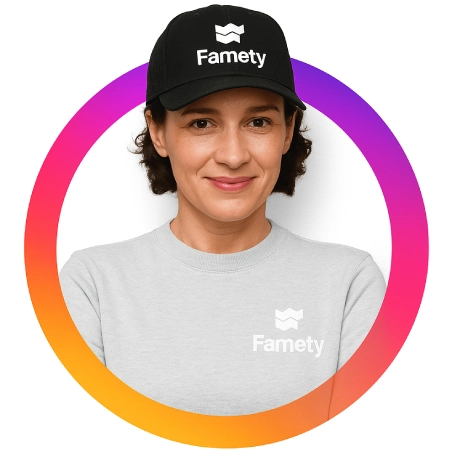- LMS stands for “Like My Status,” a Facebook slang inviting likes, reactions, or conversations on posts.
- It appears in statuses, comments, and stories where users want to boost interaction naturally.
- Effective LMS posts use humor, positivity, and relatable prompts to encourage organic engagement.
- Used thoughtfully, LMS strengthens relationships and keeps profiles active within the Facebook community.
Facebook has long been a place where users express themselves, share updates, and build social connections. Over time, short acronyms like “LMS” have become part of this communication culture. “LMS” stands for “Like My Status,” a simple yet powerful way to invite interaction and boost engagement on posts. Whether it’s a friendly challenge, a conversation starter, or just for fun, LMS helps users increase visibility while connecting with friends.
LMS Meaning in One Line
On Facebook, LMS means “Like My Status,” a phrase users add to posts or captions to encourage friends and followers to engage by liking or reacting to their updates.
Defined as “Like My Status,” a call for engagement or interaction on personal posts
LMS serves as a digital nudge, prompting users to show support or attention to a post. It often appears in personal updates or playful challenges, such as “LMS for a truth” or “LMS if you agree.” This call to action is an easy and relatable way to foster engagement without needing a lengthy caption. It transforms the act of liking from a passive reaction into an active participation cue, especially among friends and close networks.
Used in captions, comments, and challenges to invite likes or reactions
Facebook users frequently include LMS in captions and comments to boost activity and spark conversation. For example, a post might read, “LMS and I’ll post my 2024 goals” or “LMS for a fun fact about you.” These interactive trends often circulate through communities, encouraging a sense of belonging and shared entertainment. LMS also appears in comment threads when users want to resurface old challenges or drive fresh engagement on nostalgic posts.
How LMS fosters connection, visibility, and participation across Facebook
At its core, LMS is about connection. When users like or react to an LMS post, it triggers the Facebook algorithm to show the content to more people, amplifying reach. Beyond the technical benefits, LMS builds emotional connection by creating small moments of acknowledgment. It’s a casual yet effective way to remind others you’re still part of their digital world. Much like how “Bump” revives a post or “ISO” starts a conversation, LMS keeps the interaction cycle alive, ensuring engagement flows naturally across the platform.
Where You See LMS on Facebook
LMS is one of the most common engagement prompts across Facebook, appearing in status updates, comments, stories, and even viral challenges. It thrives in spaces where users want to increase visibility, build interaction, and keep conversations active. Because it’s easy to understand and participate in, LMS continues to shape how users express connection and encourage activity within their digital circles.
Status updates encouraging likes or engagement-based games
Facebook users often include LMS in their statuses to spark fun, interaction-driven games. These posts usually ask followers to like the status in exchange for something entertaining or personal, such as:
- “LMS for a random fact about you.”
- “LMS and I’ll tell you my first impression.”
- “LMS for a song that reminds me of you.”
These prompts transform casual scrolling into active participation. They add personality to profiles and help users reconnect with friends they might not talk to often.
Comment sections where users respond with emojis or replies
LMS also thrives in comment sections, especially under community or personal posts. After someone writes “LMS,” others may respond with emojis, quick reactions, or inside jokes. This form of interaction keeps posts circulating longer on feeds, increasing reach. It’s a way to keep older content relevant while reinforcing social bonds.
Story posts or reels prompting interaction through LMS-based trends
In Facebook Stories and Reels, users often use LMS to encourage quick engagement. A creator might post, “LMS if you’ve ever done this,” alongside a funny video or meme. Others use it for emotional or reflective moments, like “LMS if you’ve felt the same.” Because Stories and Reels disappear quickly, LMS helps maximize short-term visibility and makes fleeting content more memorable through engagement.
Hashtags such as #LMS or #LikeMyStatus in social or viral challenges
Hashtags like #LMS and #LikeMyStatus are essential for discoverability. They connect posts to larger trends, helping users join viral engagement challenges. Examples include group posts like “#LMSChallenge” or nostalgic throwback games that spread rapidly across friend networks. These hashtags make it easier to participate in collective online experiences, blending humor, nostalgia, and interaction into Facebook’s community-driven environment.
How to Use LMS the Right Way
Using LMS effectively on Facebook means striking the right balance between fun and authenticity. The acronym works best when it feels natural, friendly, and relatable, not forced or attention-seeking. Since LMS is designed to spark engagement, thoughtful use helps you strengthen relationships, boost visibility, and keep your audience interested without overwhelming their feeds.
Keep LMS posts positive, engaging, and audience-appropriate
The most successful LMS posts have an upbeat or relatable tone. Users tend to interact more when posts make them feel good or connected. For example, “LMS if you’re ready for the weekend” or “LMS if coffee is your personality” creates instant common ground. Keeping your content appropriate for your audience, whether it’s friends, classmates, or local groups, ensures that the engagement feels genuine, not awkward. Avoid controversial topics or sarcasm that might alienate readers.
Use LMS for authentic interaction, not for algorithm manipulation
While LMS can increase engagement, it should never feel like a trick to boost numbers. Instead, treat it as an invitation for real connection. People can easily tell the difference between a heartfelt post and one written only to chase likes. Authentic LMS posts, such as “LMS if you remember our high school days,” remind others of shared memories and spark natural conversations. The goal is interaction rooted in meaning, not metrics.
Pair with visuals or prompts that encourage organic responses
Adding visuals or question-style prompts makes LMS posts stand out and increases the likelihood of responses. Try pairing your caption with a photo, a meme, or a nostalgic image that supports your message. For instance:
- A funny meme with “LMS if this is too real.”
- A travel photo with “LMS if you’ve been here.”
- A childhood picture with “LMS if you remember these days.”
These small touches make LMS posts more eye-catching and interactive, encouraging friends to join in and keeping your feed fresh and engaging.
LMS vs Related Acronyms
LMS shares space on Facebook with several other popular acronyms that shape user interaction. While LMS focuses on engagement and connection, others like Bump, ISO, and SMH serve more functional or emotional purposes. Knowing when to use each helps creators, brands, and everyday users communicate more effectively and build stronger audience relationships.
Comparison Table, LMS vs Bump vs ISO vs SMH
| Acronym | Meaning | Common Use | Tone or Purpose |
| LMS | Like My Status | Invites likes or reactions to personal posts | Interactive and engaging |
| Bump | Bring Up My Post | Used to refresh or push posts to the top of feeds | Functional and visibility-focused |
| ISO | In Search Of | Indicates a user is looking for an item, service, or suggestion | Direct and request-driven |
| SMH | Shaking My Head | Expresses disapproval, disbelief, or frustration | Emotional and reactive |
This comparison highlights how LMS differs from other Facebook acronyms. While Bump and ISO serve practical purposes, and SMH conveys emotion, LMS thrives on connection. It builds participation through fun, positivity, and social energy.
When to use LMS instead of Bump to drive engagement rather than visibility
Use LMS when your goal is interaction, not just exposure. While Bump refreshes a post’s position, LMS encourages real engagement through likes and reactions. For example, “LMS if you’ve seen this before” creates a loop of interaction that keeps your post circulating naturally. LMS turns visibility into conversation, whereas Bump simply gives your post another chance to be seen.
When to use LMS instead of ISO to create conversation rather than requests
If your goal is to start discussions or spark fun participation, LMS is the better choice. ISO is perfect for finding things, but LMS is about connection. A post saying “LMS for a random fun fact” generates dialogue, while “ISO a local restaurant recommendation” seeks direct help. Both serve community interaction but in entirely different tones.
When to use LMS instead of SMH to build positivity instead of expressing frustration
LMS adds energy and enthusiasm to your posts, while SMH carries emotional weight. If you want to maintain a positive tone, LMS works better for community-oriented or personal engagement. For instance, instead of posting “SMH, people never listen,” a lighter “LMS if you agree” invites unity instead of judgment. The difference lies in tone; LMS builds connection, SMH reacts to emotion.







